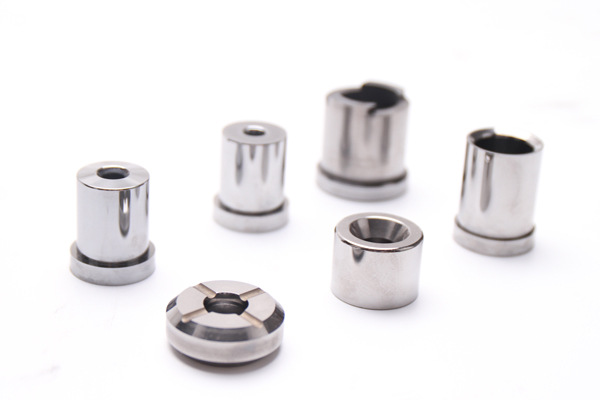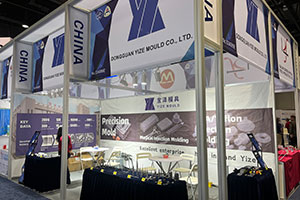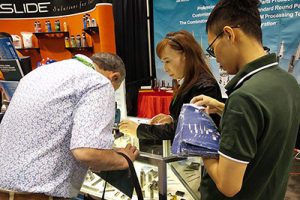Tungsten Carbide Die “Falling Ill”? This Article Teaches You Precise “Diagnosis” and “Treatment”
In the vast realm of die manufacturing, tungsten carbide die shines like a bright star. With its high hardness, high strength, excellent wear resistance, and outstanding corrosion resistance, it stands […]
In the vast realm of die manufacturing, tungsten carbide die shines like a bright star. With its high hardness, high strength, excellent wear resistance, and outstanding corrosion resistance, it stands out among numerous die materials and holds a pivotal position. It is like a tireless craftsman, silently contributing to industrial production and helping various products take shape efficiently and accurately. However, even the mightiest “warrior” can get tired and injured. During long-term use, tungsten carbide die is also prone to various faults, which are like hidden “time bombs” in the production process. These faults not only seriously affect production efficiency but may also cause irreparable damage to product quality. This article will delve into the common fault types of tungsten carbide die, explore their root causes, and provide practical solutions, helping die users become “attentive doctors” for tungsten carbide die, better maintain and manage it, and extend its service life.
I. Revealing the Common “Symptoms” of Tungsten Carbide Die Faults
1. Wear Faults: The “Scars” Left by Time
During prolonged contact and friction with workpieces, the surface of tungsten carbide die gradually shows signs of wear, just like a blade being constantly polished. This wear may not be obvious at first, but as the usage time increases, it will become more severe. When the wear reaches a certain level, the dimensional accuracy and shape accuracy of the die will deviate like a train off the tracks, resulting in non-compliant products and a significant drop in production efficiency.
당사의 공장 사업: 초경 부품, 금형 부품, 의료용 사출 금형, 정밀 사출 금형, 테플론 PFA 사출 성형, PFA 튜브 피팅. 이메일: [email protected],whatsapp:+8613302615729.
2. Crack Faults: The “Crisis” Hidden Beneath the Surface
When tungsten carbide die is subjected to significant impact forces or experiences drastic temperature changes, its internal structure may crack like a torn piece of cloth. These cracks are like “time bombs” in the die. They not only reduce the die’s strength and wear resistance, making it more susceptible to further damage, but may also trigger serious safety accidents during production, causing huge losses to enterprises and employees.
3. Deformation Faults: The “Distortion” under High Temperature and Pressure
In harsh environments of high temperature or high pressure, tungsten carbide die is likely to deform, just like a piece of clay exposed to the scorching sun. After deformation, the dimensional accuracy and shape accuracy of the die are difficult to guarantee, like a distorted painting, and cannot meet the strict requirements of product production, resulting in waste products.
4. Corrosion Faults: The “Erosion” by Chemical Substances
During use, tungsten carbide die may come into contact with various chemical substances, which act like invisible “killers” and erode the die’s surface, causing rust or pitting. Corrosion not only damages the die’s appearance but also reduces its strength and wear resistance, shortening its service life and increasing production costs for enterprises.

II. In-Depth Analysis of the “Causes” of Tungsten Carbide Die Faults
1. Material Factors: The “Hidden Dangers” of Innate Deficiencies
The material properties of tungsten carbide die are like a person’s physical fitness, directly affecting its service life and fault occurrence rate. If the material selection is inappropriate or the material itself has quality issues, it is like planting a “time bomb” in the die. During use, the die is prone to various faults and cannot perform to its full potential.
2. Design Factors: The “Root Causes” of Structural Defects
The design of the die is like the blueprint of a building. If the design is unreasonable or the structure is overly complex, it will lead to various problems during the manufacturing and use of the die. For example, uneven wall thickness of the die is like an unbalanced bridge, prone to problems under pressure; a too-small fillet radius creates a weak point at the stress concentration area of the die, making it prone to cracks or deformation.
3. Manufacturing Process Factors: The “Flaws” in the Production Process
The manufacturing process has a crucial impact on the performance and quality of the tungsten carbide die. If there are process defects or improper operations during manufacturing, it is like a fine porcelain piece having flaws during firing, which will lead to quality issues in the die and affect its service life.
4. Use and Maintenance Factors: The “Neglect” in Postnatal Care
During use, if the operators handle the die improperly or fail to maintain it in a timely manner, it is like a person neglecting their health, overworking without proper care, which will lead to faults in the die. For example, excessive impact forces, high temperatures, or poor lubrication during die use may all cause problems such as wear and cracks in the die.
III. Effective “Treatment” Methods for Tungsten Carbide Die Faults
1. Treatment Strategies for Wear Faults
- Optimize Die Design: By improving the structure and shape of the die, it is like putting on a “smooth coat” for the die, reducing the friction coefficient between the die and the workpiece and minimizing wear.
- Select Wear-Resistant Coatings: Applying wear-resistant coatings on the die surface is like putting on a “suit of armor” for the die, enhancing its wear resistance and extending its service life.
- Regular Maintenance: Regularly cleaning, inspecting, and repairing the die is like giving the die regular “physical examinations”, enabling timely detection and treatment of wear problems to prevent further aggravation.
2. Effective Remedies for Crack Faults
- Improve Material Quality: Selecting high-quality tungsten carbide materials is like injecting “strong genes” into the die, ensuring it has sufficient strength and toughness and reducing the occurrence rate of cracks.
- Optimize Die Design: Rationally designing the die structure to avoid design defects such as uneven wall thickness and too-small fillet radii is like building a sturdy “skeleton” for the die, reducing the risk of cracks.
- Strengthen Heat Treatment: Through reasonable heat treatment processes, it is like giving the die a “tempering exercise”, improving its strength and toughness and reducing crack formation.
- Control Usage Conditions: During use, avoiding excessive impact forces or temperature changes on the die is like creating a stable “working environment” for the die, reducing the risk of cracks.
3. Solutions for Deformation Faults
- Optimize Die Design: Rationally designing the die structure to reduce the deformation risk of the die under high-temperature or high-pressure conditions is like designing a reasonable “support structure” for the die.
- Control Usage Temperature: During use, keeping the die temperature within a reasonable range to prevent excessive temperature from causing die deformation is like installing a “temperature regulator” for the die.
- Adopt Support Structures: Adding support structures in die design to enhance the die’s rigidity and stability and reduce deformation is like adding “sturdy pillars” to the die.
- Timely Repair: Once die deformation is detected, taking timely measures for repair to prevent further aggravation and affecting product quality is like providing timely “treatment” to an injured die.
4. Secret Recipes for Treating Corrosion Faults
- Select Corrosion-Resistant Materials: Choosing tungsten carbide materials with good corrosion resistance is like putting on a “corrosion-resistant coat” for the die, reducing the risk of corrosion.
- Strengthen Surface Treatment: Conducting special treatments on the die surface, such as spraying anti-corrosion coatings or electroplating, is like adding a “protective film” to the die to improve its corrosion resistance.
- Control Usage Environment: During use, avoiding contact between the die and corrosive substances or environments is like creating a “clean working environment” for the die, reducing the risk of corrosion.
- Timely Cleaning: Regularly cleaning the die to remove surface stains and corrosion products and prevent further corrosion is like providing regular “cleaning and care” for the die.
IV. Summary and Suggestions
The fault types of tungsten carbide die are diverse, and the causes are complex, like a mysterious puzzle waiting to be solved. To reduce the fault occurrence rate of tungsten carbide die and extend its service life, we need to comprehensively consider factors such as material selection, design, manufacturing process, use, and maintenance, just like creating a perfect work of art where every link is crucial. It is recommended that die manufacturing enterprises and users strengthen technological research and development and process innovation to continuously improve the performance and quality of tungsten carbide die. At the same time, strengthen the management of die use and maintenance, establish a complete die management system, timely detect and handle fault problems, and ensure the stable operation and efficient production of the die, allowing tungsten carbide die to continue to shine on the stage of industrial production.
관련 게시물
- The “Secret Weapon” for Performance Enhancement of Tungsten Carbide Molds
- Unlocking the Environmental Protection Secrets of Tungsten Carbide Molds
- The “Diverse Skills” of Quality Inspection for Tungsten Carbide Dies
- Exploring Tungsten Carbide: Unlocking the Mysteries of Its Electromagnetic Properties






